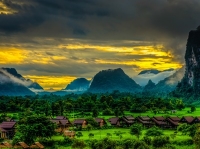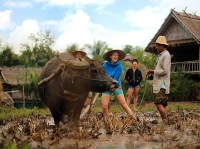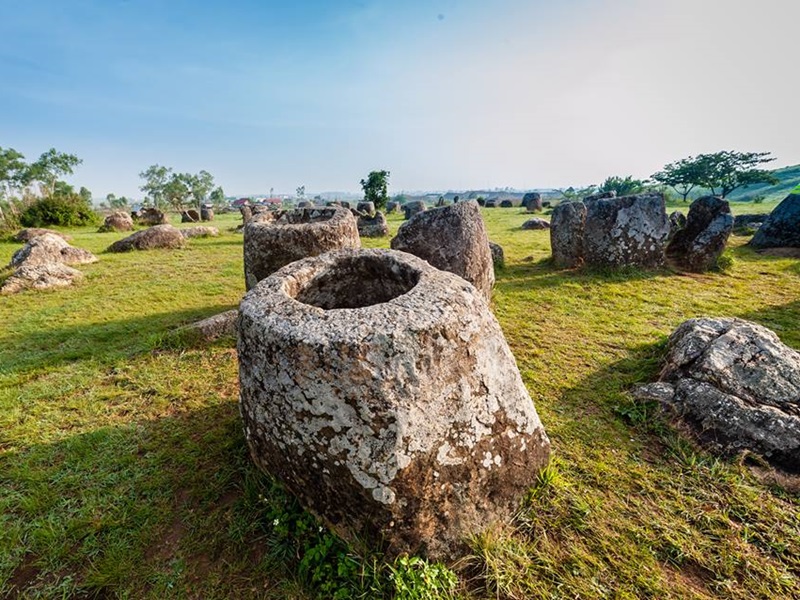Situated in Phonsavan in the remote north east of Laos, the mountainous communist country which has only been open to tourists for just over a decade, are hundreds of huge stone jars scattered across hundreds of square miles. The Plain of Jars remains the most mysterious and misunderstood of Asia’s ancient sights. Visiting the Plain of Jars brings you the same feeling of proximity and curiosity like discovering another Easter Island or Stonehenge.
Understanding
Only in the recent years after having cleared from booms and ordnances, the Plain of Jars has opened to visitors with three separate sites. Each site holds clusters of jars carved out of solid stone and seemingly dumped all around the surrounding landscape, making for some truly amazing scenery. Their size and shape vary vastly as do their positions, with some tipped over and some intertwined with surrounding shrubbery.
The Jars’ true purposes still remain unknown. It has been claimed that jars once used for funerals while local legend told that the jars were used to ferment Lao rice wine. Another theory is that the jars were used to collect rain water during the monsoon season.
Whatever its ancient history, the Plain Of Jars has had a turbulent recent past. During Indochina War, this area of Laos became of key significance and so was carpet bombed by the Americans. Laos holds the dubious record of being the most = bombed country in the world. The War left behind its conversely consequence with farmers and their families regularly being killed or injured by the unexploded ordnance which still litters the Plain.
Jar Sites
Jar Site 1 is one of the most visited and the easiest to get to but is not the best representation of the Plain of Jars. There’s a cave and some bomb craters to look at There is a small cafe, gift shop and toilets near the entrance.
Jar site 2 has two parts on either side of the road. West is where you'll find large jars under trees. East is where most people go and you'll find jars under one or two trees with some wonderful views. At the entry point to Jar site 2 there is a noodle shop which is a good lunch stop prior to heading on to jar site 3.
Site three is located not too far from site two and is arguably the most picturesque of the lot. Rolling hills, bomb craters, rice fields and plenty of cattle are what greet visitors to site three.
What to buy
You can buy some typical local products from Phonsavanh and the surrounding area such as natural dyes and textiles, basketry, mulberry paper umbrellas, spoons & bangles made from war scrap or Hmong embroidery. Remember that bringing antiques home from Laos may be illegal. Some special local drinks also great to try.
Getting there
The small town of Phonsavan is the capital of Xieng Khouang province and is the usual base for visiting the Plain of Jars.
By Plane: Lao Airlines has several flights a week from Vientiane to Phonsavan's Xiang Khouang Airport (XKH).
By Bus: Daily buses run between Phonsavan and Vang Vieng (eight hours), Luang Prabang (eight hours), and Vientiane (eleven hours).
Or even you can grab a bike, and roll your own adventure!








